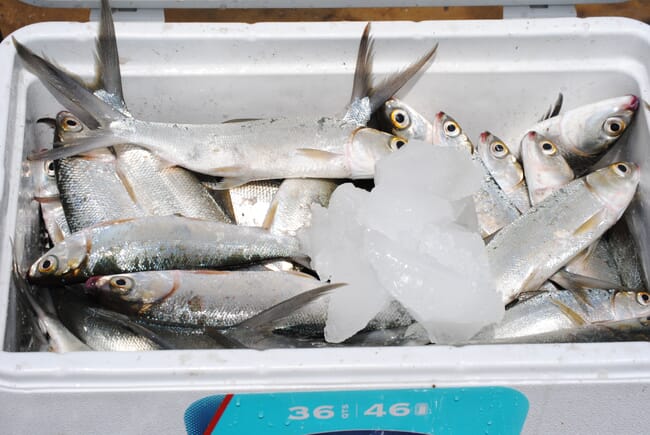
This was one of the key messages delivered by Fish Welfare Initiative (FWI), in a webinar that followed the release of their initial study of the husbandry practices currently taking place at fish farms in the Philippines. Due to Covid-related travel restrictions the team at the welfare startup were only able to visit 13 tilapia and milkfish farms. However, while their sample size was small, their findings were still significant.
The main gaps in welfare they encountered related to lack of water quality monitoring equipment, a lack of access to both training and veterinary care. Welfare at slaughter was another key concern, with all of the farms asphyxiating their fish in ice slurry rather than using percussive or electric stunning methods.
An appetite for change
Despite this, FWI did draw a number of positive conclusions, not least the fact that all 13 farmers said they would be open to collaborate on projects that improved the welfare of their fish.
“Aside from the gaps we also spotted opportunities / bright spots during the study. We saw the openness of farmers to collaborating with institutions to improve their culture systems and the welfare of the farm animals. Here in the Philippines there are a lot of NGOs that are closely working with fish farmers in particular those advocating for sustainable aquaculture practices, so collaborations like this are not new to many farm owners," stated the report’s lead author, Ethel C Wagas.
“We also saw that there are a lot of support systems that are already in place here – for one we have the [1998] Animal Welfare Act, the legislation that protects the welfare of animals. Second we have the presence of several NGOs on animal welfare, although not much has been focused on finfish welfare to be exact, but the groundwork has already been laid by many of these NGOs that have been working in the country for many, many years. And then we also have NGOs that are doing very good work on sustainable aquaculture practices, advocating for those practices. And if you look at the principles of sustainable aquaculture practices there are actually certain points there that are very similar to practices that are followed in higher welfare farms, and that means that the foundation is already there for welfare work to build on,” Wagas noted.
Welfare recommendations
She ended with a number of key recommendations for ways to improve welfare, which included:
“The need to highlight the importance and benefits of fish welfare across the entire supply chain, because welfare doesn’t not start and end in fish farms. First there should be this demand in the market for higher welfare products to encourage the farmers to adopt welfare interventions, to improve the welfare of their fishes. And we also saw the need to study the market dynamics. Because, with any changes in the culture systems of these farms there’s a possibility that it could entail certain cost implications, and the openness of farmers to accept any welfare interventions could be highly dependent on that," said Wagas.
“We also saw the need to provide farmers with better access to training, and finally to collaborate with multiple stakeholders – government, NGOs, academia for fish welfare science, and businesses also.”
“Our key takeaways: the country is highly dependent on its fisheries resources and good husbandry practices play a crucial role in safeguarding the welfare of millions of farmed fishes. But we also saw promising opportunities for welfare work in the country… there’s this comprehensive national fisheries industry development plan, which includes plans to intensify aquaculture to help improve food security and this makes it very timely for fish welfare work to begin here in the Philippines,” she concluded.
Practical measures
In the Q&A that followed, FWI’s Haven King-Nobles spoke about how the organisation was planning to follow up on this valuable research.
“It’s very easy to do research and not do anything about it but we always have to be focused on action... while we’re fairly occupied with our work in India for the next few years, our best plan currently for following this work up in the Philippines is to get local people on board. If you’re interested we really are looking for talented people to take part in an internship in the Philippines who can follow up some of the recommendations that Ethel made… we believe in empowering local people to take the lead on these operations.
"I think some of the recommendations Ethel made are useful points to follow up, we know what the aquaculture industry is like there, we know there’s some interest in improving welfare, we know that certification schemes can be worked with there, so there are a few different avenues, but essentially the bottleneck now is having local talent to follow up,” he said.
*This figure is an estimate based on figures FWI obtained from fishcount, which estimates that between 822 million and 1.6 billion milkfish and 334 million to 1.06 billion tilapia are produced in the archipelago each year.




